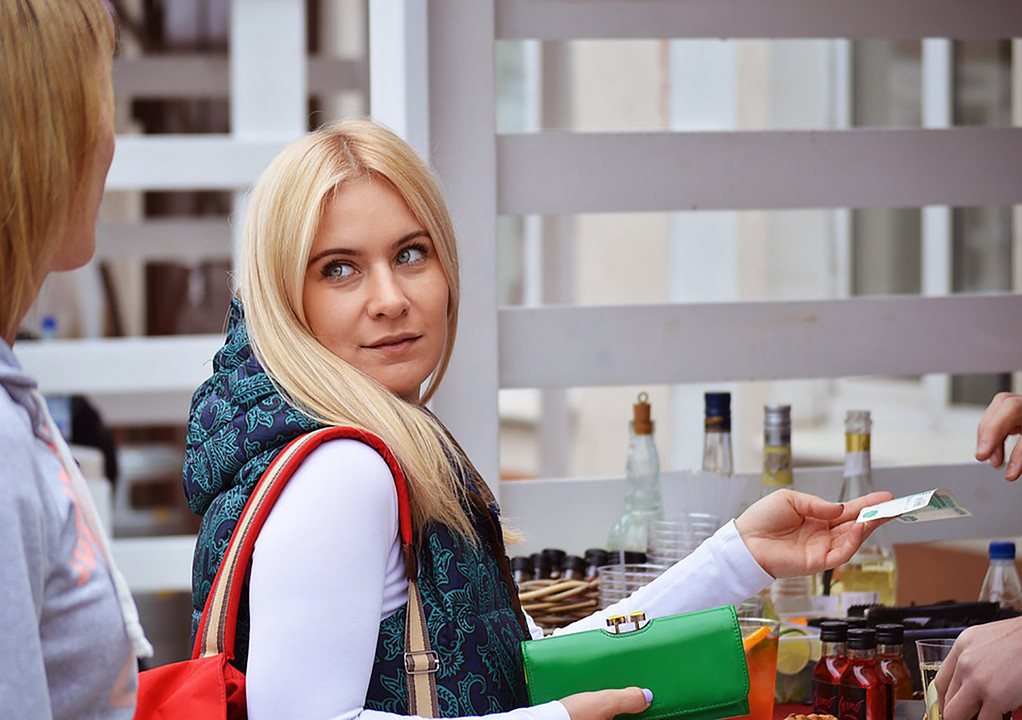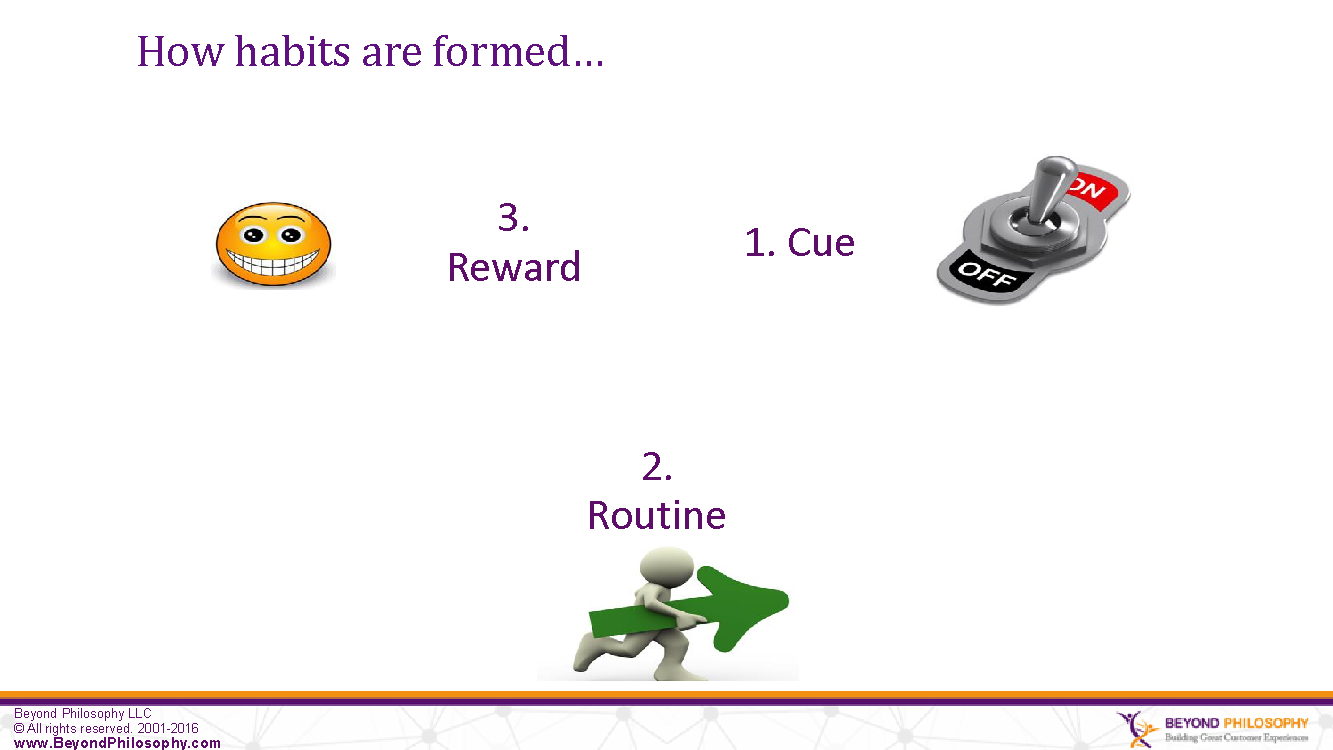We all have habits. Some of them aren’t very good habits, either. But we have them, nonetheless. Many of them form without our awareness. We have habits as customers, too, and habits are powerful things, especially for Customer Experiences.
We discussed this problem on our recent podcast, and defined habits as any time your mind prepares you to respond in a certain way based on environmental cues or stimulant.
Habits work off of our two ways of thinking, which we refer to as the Intuitive System and the Rational System in our book. These names come from Nobel-prize-winning-economist Professor Daniel Kahneman’s System One and System Two thinking. He said our System One thinking is automatic and emotional (Intuitive System) while System Two thinking is more slower and more rational (Rational System). Kahneman’s book, Thinking Fast and Slow, explains it all in more detail.
Your Intuitive System Drives Habits
When you buy from habit, your Intuitive System takes over and makes decisions. We can compare the Intuitive System to a helpful 8-year-old; it’s trying to help and sometimes it does, but sometimes it falls short.
For example, if you decide one day that you are going to pop out of bed and do twenty push ups…you know what? Let’s pick something more realistic. If you get out of bed and shuffle to the kitchen to get a cup of coffee one day and you enjoy it, you might make the same decision the next day, and the day after that. After a few days of this pattern, your Intuitive System picks up on it. Then, the next day, when you awake, your Intuitive System will automatically shuffle you to the kitchen for your cup of coffee (or two) without you consciously making that decision. In this case, the helpful 8-year-old was right on the money!
I have habitual behaviors, too, and they are associated with brands. For instance, whenever I pay for something, I reach for my AmEx card. I keep it in the same place in my wallet and I have it out before I know it. I don’t consciously reach for the card; it’s automatic. My Intuitive System picked up on my behavior and made it automatic. Also, when I book a flight, it’s on Delta. I don’t deliberate about it; I just book it. Interestingly enough, it used to be Virgin Atlantic, but now it’s Delta. More on that later.
Sometimes we think of habits as overwhelming urges. We think of them in connection with things like smoking and drinking, or even something really bad for us, eating carbs. We consider them uncontrollable. But that is wrong, that’s not how habits work.
Habits are only the Intuitive System making certain behaviors easier. But you can override it, and you do it with your Rational System. In fact, one of many things that the Rational System is useful for is taking control when the Intuitive System is getting off track.
Habits have three parts that initiate them. The Cue, the Routine and the Reward:
- The Cue, also known as the Trigger is what signals to the Intuitive System to initiate the habit.
- The Routine is the behavior that occurs after and because of the cue.
- The Reward is the feeling of satisfaction that you get from the behavior.
So, using our coffee in the morning example, the cue is waking up and still feeling groggy and unprepared for the day. The routine is shuffling to the kitchen to prepare your coffee the “way you take it.” The reward is the blissful taste and energizing jolt the coffee provides.
Changing Habits Requires Interrupting the Cycle
In a way, you could say we train the Intuitive System to have habits. That implies that we can also un-train them. All it requires is to disrupt the pattern.
Lorraine, my wife, has a certain brand of toothpaste that she buys. Her Intuitive System recognizes when she is in the toothpaste aisle, has her hand reach for the right-colored box on the shelf, and her mind is rewarded by moving on to the next item on his list.
A competitor of this toothpaste brand might have better benefits for her smile than the toothpaste she uses. She might see or hear an ad about this toothpaste competitor, and be interested. However, when she goes to the store and the habitual cycle begins, she still buys the habitual brand.
What the competitive toothpaste needs to do is interrupt the cue. It needs to disrupt the cycle. It needs to have a person there handing out samples of the toothpaste or an endcap display that draws Lorraine’s eye. It needs to send her a free sample in the mail or hire one of those people to twirl a sign featuring the toothpaste in front of the store!
When it comes to Customer Experience, we all need to understand customer’s habits. If they buy you out of habit, you need to work on ensuring they stay emotionally engaged with you. If they don’t buy you out of habit, you need to disrupt the cycle. The important thing here is you want to be the cup-of-coffee-in-the-morning habit that you customers gravitate toward automatically, driven by the Intuitive System while the Rational System silently approves.
Are you aware of all your habits? Let us know if you have tried to stop one and succeeded!
If you enjoyed this post, you might be interested in the following blogs and podcasts:
Why Customers Make Strange Decisions
Colin Shaw is the founder and CEO of Beyond Philosophy, one of the world’s leading Customer experience consultancy & training organizations. Colin is an international author of six bestselling books and an engaging keynote speaker.
Follow Colin Shaw on Twitter @ColinShaw_CX



